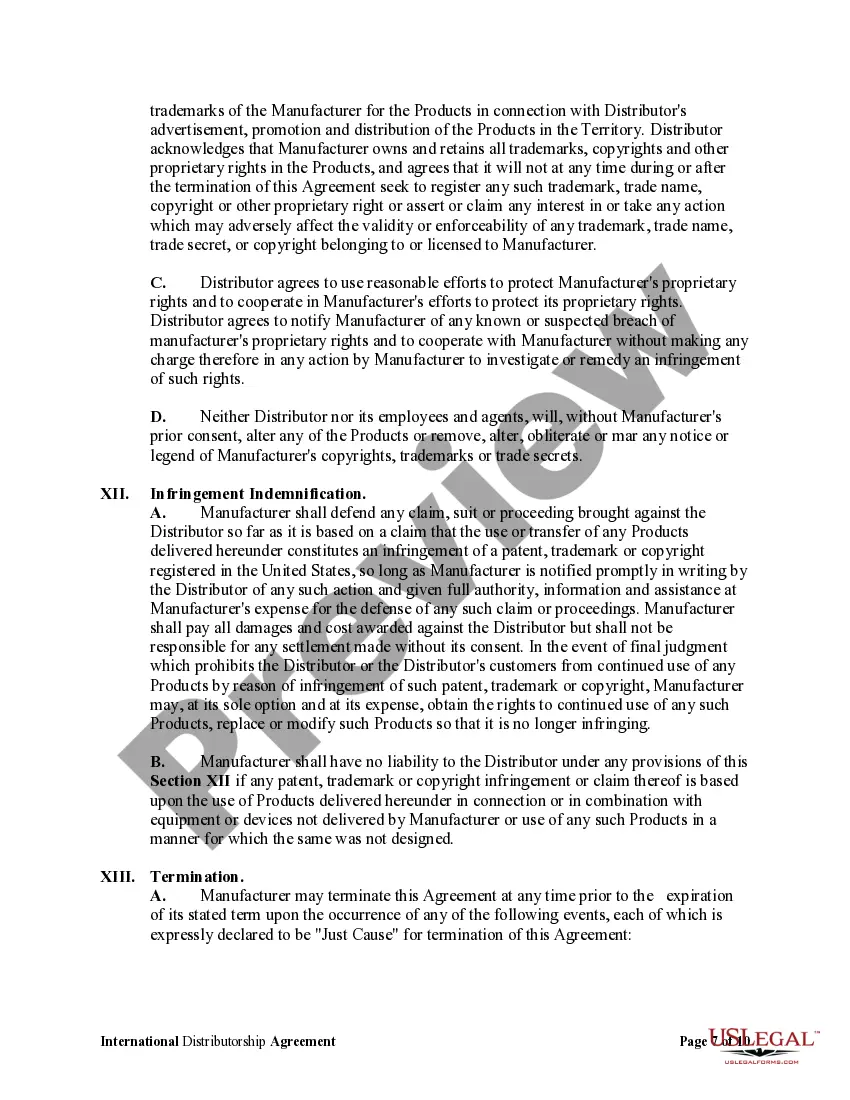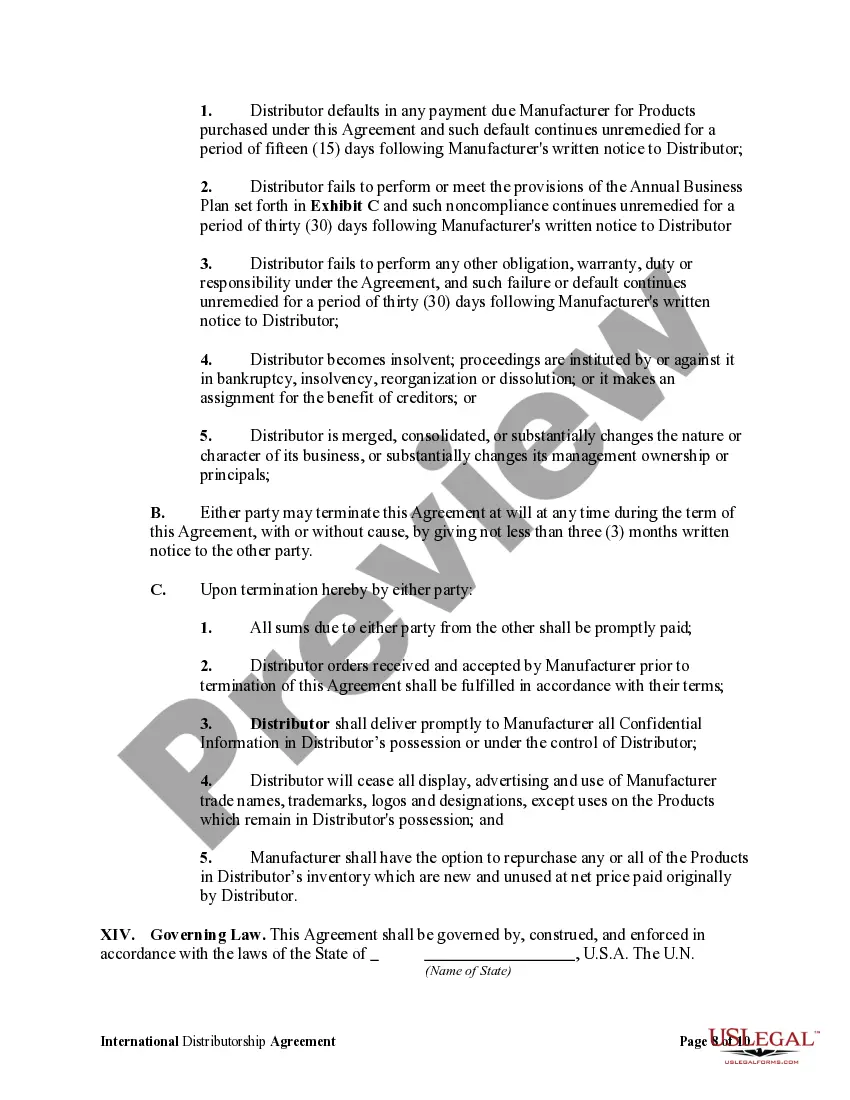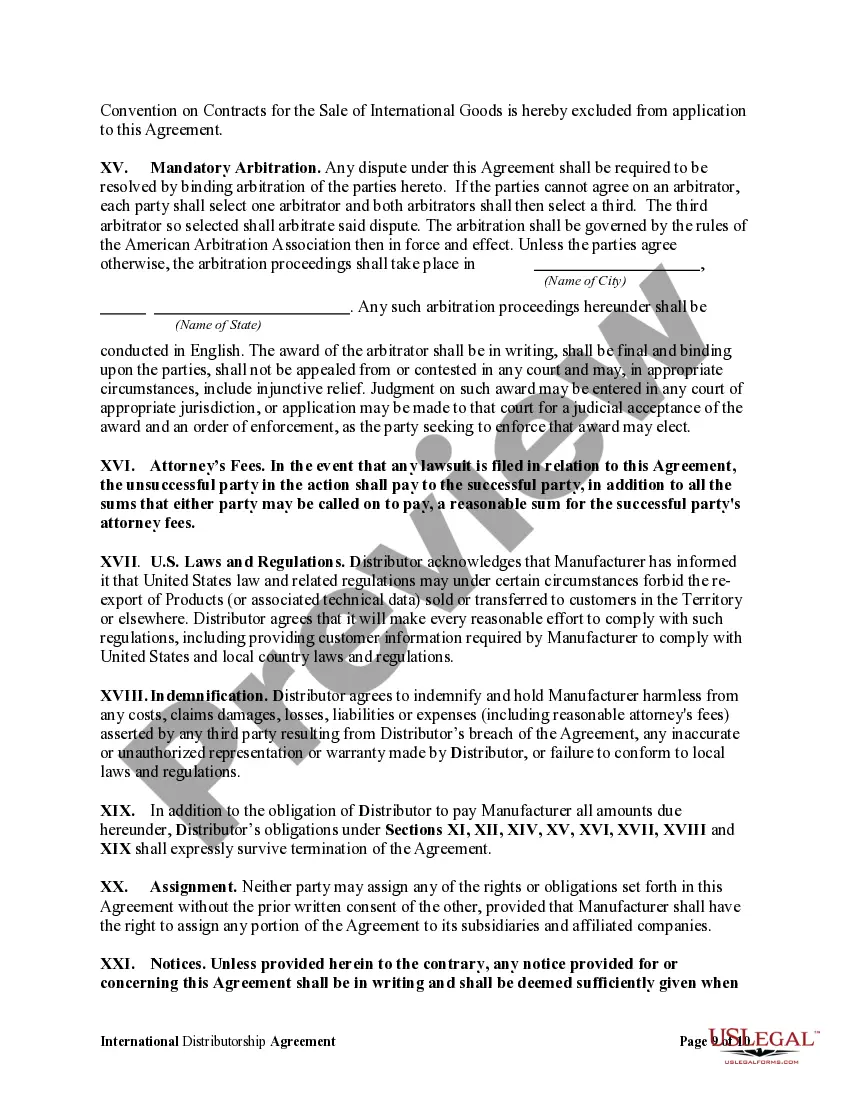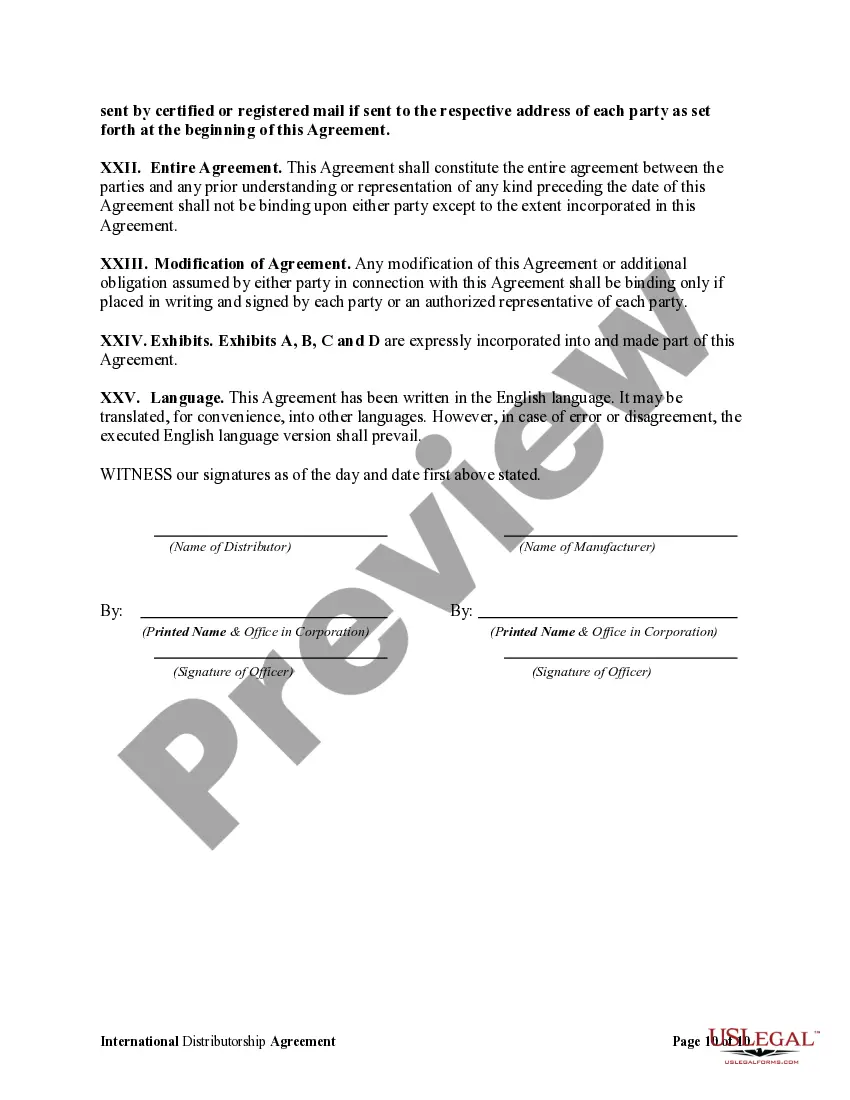Sample Agreement For Exclusive Distributorship In Florida
Description
A manufacturer is an entity that makes a good through a process involving raw materials, components, or assemblies, usually on a large scale with different operations divided among different workers. Commonly used interchangeably with producer.
Form popularity
FAQ
Examples of companies that use exclusive distribution include Apple for its high-priced and luxury products, as well as companies like Lamborghini, BMW, Rolex, and Mercedes. These companies appoint only a few distributors to cover a specific region, maintaining exclusivity in their distribution agreements.
The Company represents and warrants that no other person or entity has any rights to sell and promote the Company's products or services, including those products or services listed in Attachment A (the “Products”) hereto, within the Exclusive Territory in derogation of the rights granted to the Exclusive Distributor ...
Exclusive distribution is when a manufacturer grants a single retailer or distributor the exclusive rights to sell their products within a specific region. The goal with this strategy is to create a sense of scarcity. If the product is only found in certain locations, demand can go up.
As discussed in the Fact Sheets on Dealings in the Supply Chain, exclusive contracts between manufacturers and suppliers, or between manufacturers and dealers, are generally lawful because they improve competition among the brands of different manufacturers (interbrand competition).
Here are six steps you can take toward becoming a distributor: Identify your industry. The first step to becoming a distributor is identifying the industry you'd like to serve. Register your business legally. Seek suppliers and manufacturers. Plan your logistics. Apply as a distributor. Build relationships.
When a purchaser places restrictions on a supplier, this is also exclusive dealing. For example, a purchaser refuses to buy from a supplier unless the supplier agrees not to supply the purchaser's competitors.
In terms of content, an Estate distribution letter should include: the deceased's personal details; a detailed and complete list of all assets and liabilities; the Beneficiary names and the details of their respective inheritances; any details on debt settlement and creditor communication;
An exclusive distribution clause prevents the supplier from forming other distribution contracts in a given market or territory. This gives the distributor the exclusive right to sell the products in that region. Exclusivity might be provided contingent on the distributor's performance.
The term for Distribution Agreements varies, with terms being anywhere from 5 to 15 years. I try to limit the term as much as possible—especially when there is no advance, or a meager one.




















